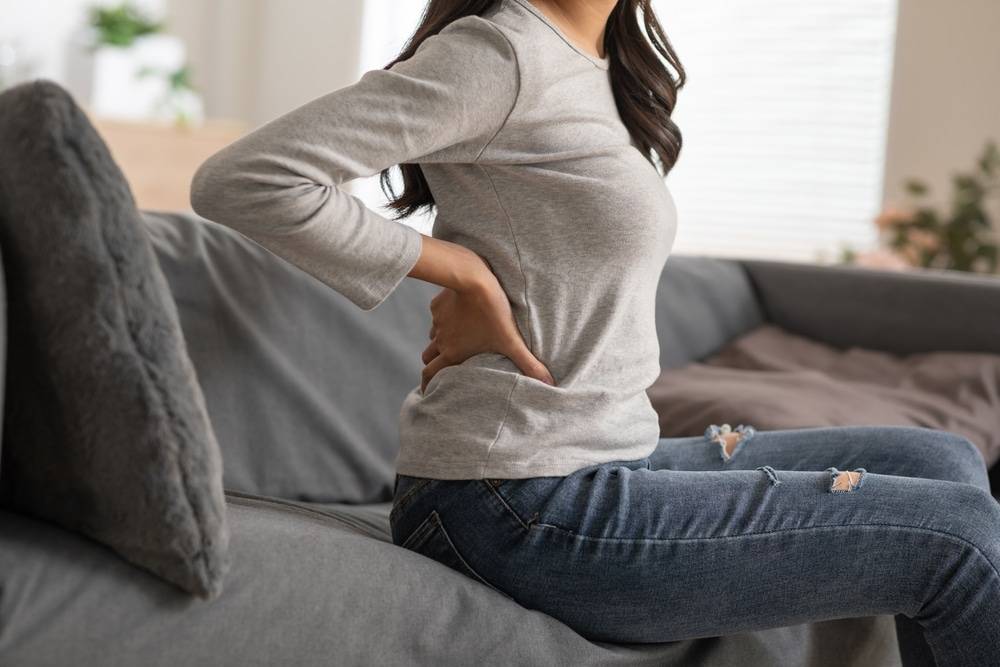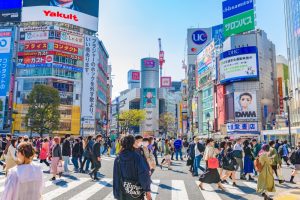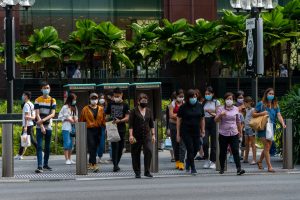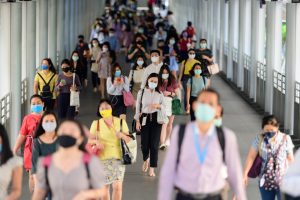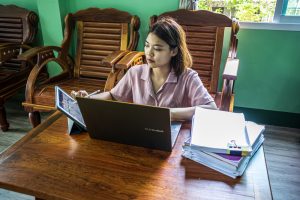Can bone density loss be reversed? Southeast Asia faces a rising ageing population, challenging bone health.
Innovative strategies combining traditional diets, community exercise, and medical breakthroughs are showing promise. This article explores these solutions, supported by local data and research, to enhance bone density restoration.
The Complex Landscape of Bone Density in Southeast Asia
Bone density issues in Southeast Asia are shaped by a variety of genetic, lifestyle, and demographic factors. Recent research provides a clearer picture of these challenges and highlights the need for tailored health strategies.
Bone Density Among Southeast Asian Immigrants
A study reveals that Southeast Asian immigrants in the US have lower bone mineral density (BMD) and bone mineral apparent density (BMAD) compared to their Caucasian counterparts. Factors such as age, weight, and pregnancy history were found to be predictors of bone density, particularly at the femoral neck and lumbar spine.
Bone Health in Thai Youth
Research focusing on Thai children and adolescents has established baseline values for BMD, bone mineral content (BMC), and other key metrics. The study found that age, gender, puberty, weight, height, and calcium intake are crucial in determining bone health, highlighting the importance of early assessment and intervention in these populations.
Comparative Bone Health in College Students
Further research comparing Southeast Asian and Chinese college students shows that Southeast Asians tend to have higher body weights but lower BMD at the calcaneus. The calcaneus, or heel bone, is often chosen for this measurement because it is easily accessible and its high content of trabecular (spongy) bone reacts quickly to changes in bone density, making it a good indicator of overall bone health. This suggests that genetic, dietary, and lifestyle differences play significant roles in bone health, indicating the need for region-specific health policies and programs.
Nutritional Influences on Bone Health in Southeast Asia
Nutrition is pivotal for maintaining strong bones, especially in Southeast Asia, where diverse diets impact bone health.
Calcium and Vitamin D Supplementation
Effective strategies are crucial for combating bone density loss. A study on post-menopausal women showed that fortified milk with high calcium and vitamin D improved their vitamin D status and bone markers. This intervention reduced women with insufficient vitamin D and lowered parathyroid hormone levels.
Public Health Initiatives and Supplementation Programs
Micronutrient deficiencies are widespread due to poor diets. The Southeast Asian Nutrition Surveys (SEANUTS) highlighted high deficiencies impacting children’s bone health. Regional symposiums discuss fortifying foods with vitamin D to improve diet quality.
Impact of Traditional Diets vs. Urbanised Diets
Traditional diets in Southeast Asia, rich in fish, soy, and greens, provide essential nutrients like calcium and vitamin D. Urbanisation leads to more Western diets, often lower in these nutrients, affecting bone health in urban populations.
Exercise and Lifestyle Modifications for Bone Health
Maintaining and enhancing bone density necessitates active engagement, especially as urban lifestyles become more prevalent, reducing daily physical labour.
- Community-Based Exercise Programs: To counteract these lifestyle shifts, various countries have initiated community exercise programs. Tai Chi, celebrated for its gentle yet effective movements, is particularly popular. Regular practice among the elderly has been linked to decreased rates of bone density loss, demonstrating its effectiveness.
- Schools and Workplace Initiatives: Recognising the importance of early intervention, many schools are now bolstering their physical education programs. Similarly, workplaces are implementing wellness programs that promote active breaks and fitness sessions. These initiatives are crucial not just for general health, but specifically for enhancing bone health.
- Urban vs. Rural Activity Levels: The contrast in physical activity between urban and rural residents also impacts bone health. Rural areas typically involve more physically demanding daily routines, providing natural benefits to bone density. This disparity highlights the need for targeted urban interventions to mitigate the effects of sedentary lifestyles.
Medical Interventions and Technological Advances in Bone Health
The fight against bone density loss in Southeast Asia is bolstered by medical and technological advancements.
- Pharmacological Treatments: Bisphosphonates significantly increase bone mineral density, particularly noted in children with chronic graft-versus-host disease. Studies, highlight their effectiveness using baseline and follow-up DEXA scans to document improvements.
- Technological Innovations in Diagnostics: DEXA (Dual-Energy X-ray Absorptiometry) scans play a pivotal role in diagnosing and monitoring bone density changes. Chang et al. (2013) demonstrated how DEXA scans are essential in evaluating the effectiveness of bisphosphonates in spinal cord injury patients, showcasing their value in early detection and management.
- Integration of Traditional and Modern Medicine: While direct evidence linking traditional Southeast Asian medical practices with modern bone health treatments is sparse, there is growing interest in holistic approaches. The integration of herbal medicines with contemporary medical treatments offers a promising avenue for enhanced patient care, though more research is necessary to fully gauge its impact.
Looking Forward: Policy and Innovation in Bone Health
The future of bone health management in Southeast Asia looks promising, supported by innovative policies and ongoing research. Governments are increasingly aware of the critical role bone health plays in overall public wellness and are implementing specific policies to enhance awareness and prevention.
Recent health policies are increasingly emphasizing the importance of raising public awareness and advocating preventive measures. Concurrently, initiatives such as nutritional programs and community fitness projects are being initiated to tackle the escalating rates of bone density loss.
Moreover, the region is witnessing a flurry of activity in the realm of treatment development and enhancement. Collaborations between universities, hospitals, and international health organizations serve as the cornerstone, catalyzing innovations that redefine the landscape of bone health management.
Integration of new technologies into healthcare practices is advancing rapidly. Tools such as telemedicine, wearable health trackers, and AI-driven diagnostics are becoming more commonplace, facilitating more personalised and efficient patient care.
Fostering Stronger Bones for a Healthier Tomorrow
In Southeast Asia, the ongoing battle against bone density loss necessitates concerted efforts from policymakers, medical professionals, and communities alike. Through proactive policy development, innovative research endeavors, and the integration of state-of-the-art technologies, a comprehensive framework for managing bone health is taking shape. Moreover, by leveraging these approaches in tandem, a cohesive strategy is being forged to combat this pressing health concern.
By also considering cultural nuances in treatment approaches, the region is poised to see significant strides in public health outcomes.
These concerted efforts ensure that Southeast Asia is not just reacting to current health challenges, but is also proactively laying the groundwork for a healthier future. The ongoing commitment to enhancing bone health through comprehensive strategies promises to fortify the well-being of its diverse populations, making bone health a priority in the region’s broader health agenda.
References
- Marquez, M. A., Melton, III, L. J., Muhs, J. M., Crowson, C. S., Tosomeen, A., O’Connor, M. K., O’Fallon, W. M., & Riggs, B. L. (2001, August 1). Bone Density in an Immigrant Population from Southeast Asia. Osteoporosis International, 12(7), 595–604. https://doi.org/10.1007/s001980170083
- Nakavachara, P., Pooliam, J., Weerakulwattana, L., Kiattisakthavee, P., Chaichanwattanakul, K., Manorompatarasarn, R., Chokephaibulkit, K., & Viprakasit, V. (2014, May 21). A Normal Reference of Bone Mineral Density (BMD) Measured by Dual Energy X-Ray Absorptiometry in Healthy Thai Children and Adolescents Aged 5–18 Years: A New Reference for Southeast Asian Populations. PLoS ONE, 9(5), e97218. https://doi.org/10.1371/journal.pone.0097218
- Liu, P., Ye, Z., Lu, J., Lu, H., Guan, L., Teng, Z., Gao, S., & Li, M. (2016, September). A comparison of bone mineral densities and body composition between Southeast Asia college students and Chinese college students. Medicine, 95(37), e4724. https://doi.org/10.1097/md.0000000000004724
- Kruger, M. C., Schollum, L. M., Kuhn-Sherlock, B., Hestiantoro, A., Wijanto, P., Li-Yu, J., Agdeppa, I., Todd, J. M., & Eastell, R. (2010, March). The effect of a fortified milk drink on vitamin D status and bone turnover in post-menopausal women from South East Asia. Bone, 46(3), 759–767. https://doi.org/10.1016/j.bone.2009.10.036
- Moench-Pfanner, R., & Bloem, M. W. (2013, June). ASEAN: Insights and Considerations toward Nutrition Programs. Food and Nutrition Bulletin, 34(2_suppl1), S4–S7. https://doi.org/10.1177/15648265130342s102
- Chang, K. V., Hung, C. Y., Chen, W. S., Lai, M. S., Chien, K. L., & Han, D. S. (2013, November 22). Effectiveness of Bisphosphonate Analogues and Functional Electrical Stimulation on Attenuating Post-Injury Osteoporosis in Spinal Cord Injury Patients- a Systematic Review and Meta-Analysis. PLoS ONE, 8(11), e81124. https://doi.org/10.1371/journal.pone.0081124
- Carpenter, P. A., Hoffmeister, P., Chesnut, C. H., Storer, B., Charuhas, P. M., Woolfrey, A. E., & Sanders, J. E. (2007, June). Bisphosphonate Therapy for Reduced Bone Mineral Density in Children with Chronic Graft-versus-Host Disease. Biology of Blood and Marrow Transplantation, 13(6), 683–690. https://doi.org/10.1016/j.bbmt.2007.02.001




